
Harry Fecitt
-
Posts
324 -
Joined
-
Last visited
-
Days Won
6
Content Type
Profiles
Forums
Blogs
Gallery
Events
Store
Posts posted by Harry Fecitt
-
-
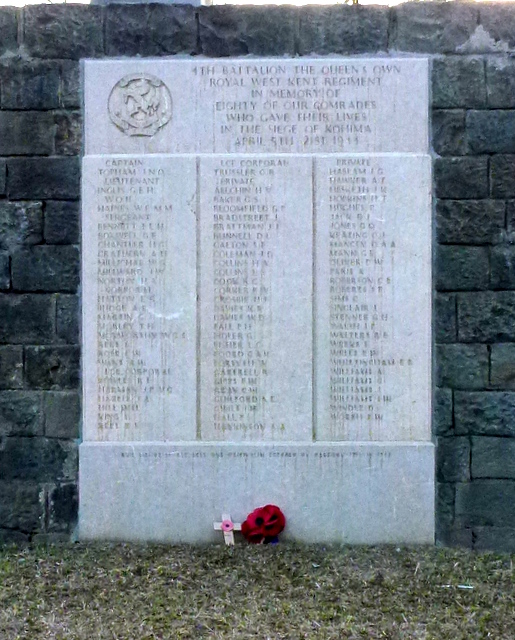
The Memorial to the fallen of the 4th Bn The Queen's Own Royal West Kent Regiment (KWC).
1 -
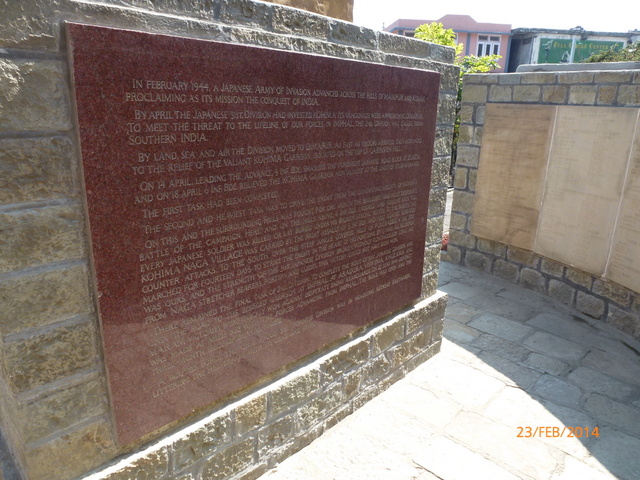
The 2nd Division Memorial in Kohima War Cemetery (KWC).
1 -
Blue
I can only echo the Aberdonian's words.
This is the type of research information that we need excavating from its resting places.
I am pleased - especially for the recipients. Shahbash to them too!
Harry
0 -
-
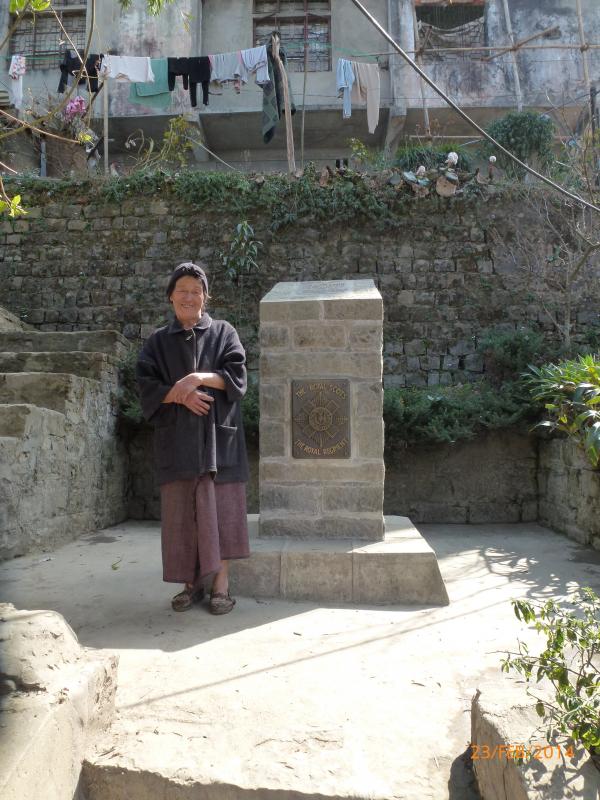
This is the Royal Scots Memorial.
Standing next to it is the Naga lady who lives by it, & who keeps it clean and tidy without payment.
1 -
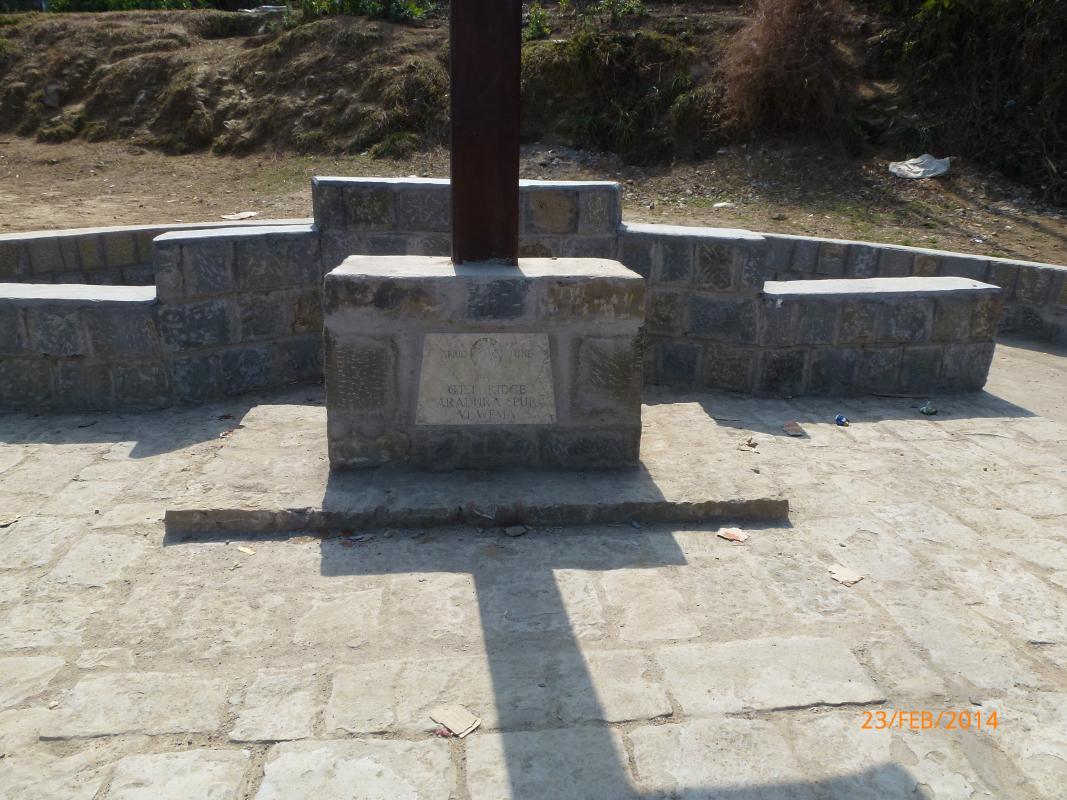
This little plot was run-down through neglect and lack of interest and the local Nagas offered to take over the maintenance.
After prevarication (allegedly) the CWGC is now maintaining the plot, but encroachment is happening with vegetable gardens being cultivated on one side.
It would be good if the Royal Anglian Regiment would collaborate with the CWGC, install name-panels, and perhaps some playground items for the local Naga children.
1 -
The Norfolk Regiment Memorial in Kohima town.
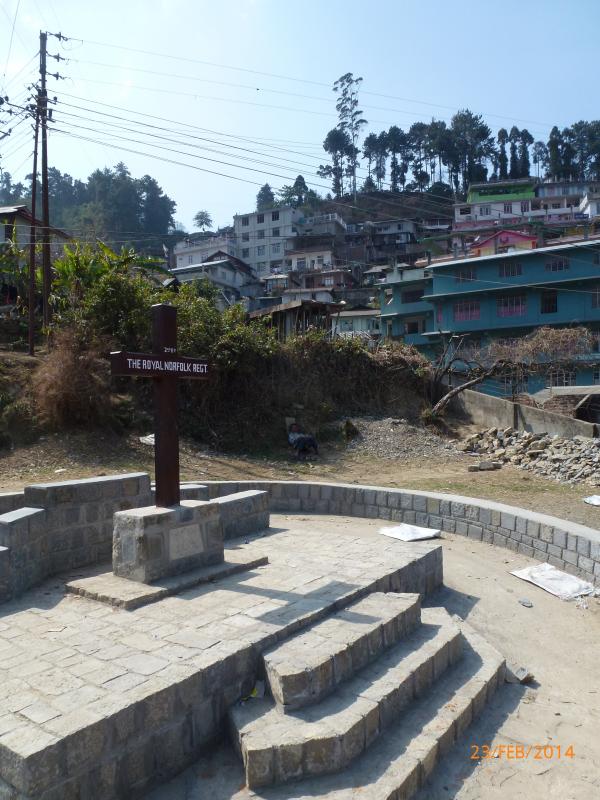 1
1 -
-
-
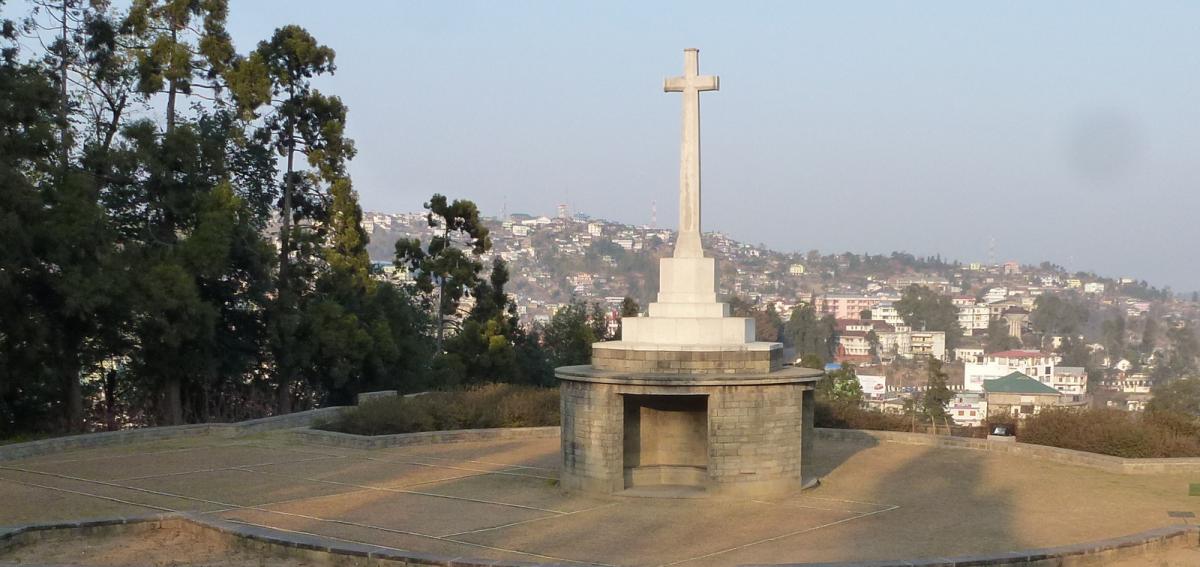
The Cross of Sacrifice in Kohima War Cemetery looking from the British position on Garrison Hill.
The lines of the tennis court - the front line across which both sides fought and exchanged grenades - can be seen in the left foreground.
Naga Village, the Japanese base, is on the highest point of the horizon.
1 -
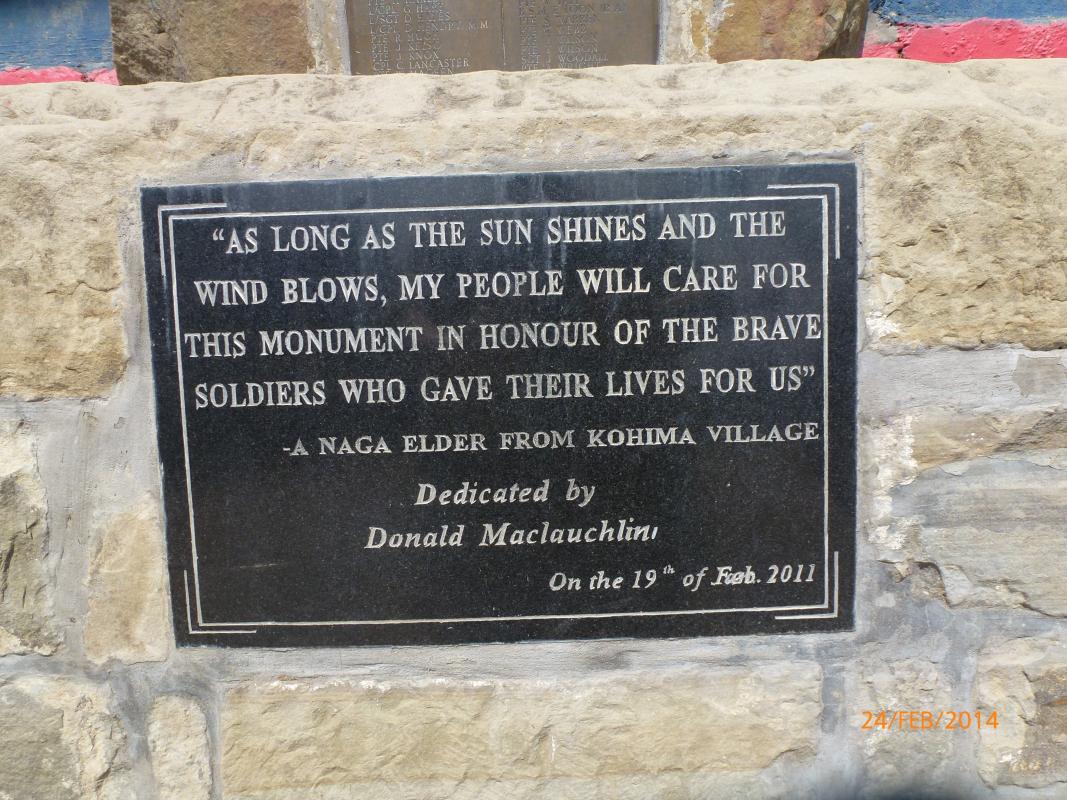
We the British owe the Nagas, who are predominantly Christian, a lot for their loyalty in WW2. They carried supplies into Kohima and then carried wounded men out. They lost many men whilst helping us.
Their reward from us was to be handed over to Hindu India on partition and independence. This caused distress and insurrection in Nagaland.
The other dominant tribe, the Kukis, sided with the Japanese from the outset.
Naga Village is a prominent hill facing Garrison Hill which was the main British defended position at Kohima. The Japanese took Naga Village as their first objective and used it as their base. It was a grim task to finally destroy their bunkers in the village.
1 -

I like the absence of rank in setting out the names here - all are in alphabetical order.
These men fought and died together in their company teams, and I am sure that they would have been happy with this memorial. There is no need for the discriminations that peace-time armies consider to be necessary.
1 -

I have been visiting the Imphal & Kohima battlefields in the last few days.
There are some interesting memorials scattered around the town. This is the Cameron Highlanders' Memorial - with the Naga guide who helped me find it on the summit of Naga Village Hill.
1 -
Just as a matter of interest to relevant Members I came across this Empire Gallantry Medal today whilst perusing the LG (Supplement dated 23 June 1936 page 4010):
CENTRAL CHANCERY OF THE ORDERS OF KNIGHTHOOD.
St. James's Palace, S.W.I. 23rd June, 1936: The KING has been graciously pleased, on the occasion of His Majesty's Birthday, to approve of the Award of the Medal of the Military Division of the Most Excellent Order of the British Empire to the undermentioned:— For Gallantry.El Yuzbashi ('Captain) El Amin Effendi Hemeida, Sudan Defence Force.
For conspicuous gallantry and devotion to duty in circumstances of very considerable personal danger. On the morning of 4th January, 1936, in the Barracks at Omdurman, a party of the Sudan Defence Force were engaged in making explosive charges. El Amin Effendi Hemeida was in charge of a section of the working party, whose duty was to place the guncotton and primers in containers. A charge which was being assembled in another part of the room accidentally exploded, killing one Non-Commissioned Officer and injuring a Native Officer and eight Non-Commissioned Officers. The building was extensively damaged and fire broke out in several places.
El Yuzbashi El Amin Effendi Hemeida, though uninjured was badly shaken and dazed. On recovering, although fully realising the risk of further explosions, since he knew that three more containers filled by his section were still in the room, he immediately went to the assistance of the injured, and then took active steps to extinguish the fires and remove the unharmed charges to a place of safety. His gallant behaviour was instrumental in saving at least one life among the injured, and his presence of mind undoubtedly prevented further explosions which must have resulted in greater loss of life.
Am I correct in thinking that once the Sudan Defence Force was created in 1925 its personnel were eligible for entry into the British Honours & Awards system, and it is the period after the Great War ended and before the SDF was created that Mr Mackinlay refers to as an ineligible period for Sudanese personnel?
0 -
Mr Mackinlay et al
Salaam Aleykum
I have read through all your kind comments and besides thanking you again I have some of my own thoughts and comments:
1. A somewhat inaccurate description of the Darfur is at http://www.kaiserscross.com/188001/224322.html the writer does not make it clear that the majority of the troops were British Army regulars not local troops, ie. the mounted infantry, artillery and camel corps were all British as were most of the support troops, some 1,300 men out of the 2,700 in the force (not 2,000 as the article says) plus some 1,500 British led Sudanese and Egyptian civilians who mainly running the baggage train of over 1,200 camels, and a thousand plus donkeys and mules, and acting as bearers. I having copies of the ongoing official reports of the campaign.
Mr Mackinlay, as author of that article I regret the inadequacies that you see in it.
However chaps like myself in remote locations can only work with the material that we may access, and all the above figures and descriptions come from page 148 of the 1st Volume of the Official History, Military History, Egypt and Palestine.
I have no apologies to offer because I at least did something and produced something based on an official history and the account of a participant (People of the Book by Major A.J. Pott DCM)..
But please Mr Mackinlay if you can offer us further knowledge and insight into the Darfur Campaign, then please publish it, even if it is in note form, on this or another forum.
I am sure that all of us would greatly appreciate that.
2. To quote from Soldiers of the Nile. A Biographical History of the British Officers and of the Egyptian Army 1882-1925 by Henry Keown-Boyd.
The bars NYALA and DARFUR 1921 are usually found together and were awarded to those troops and police involved in the suppression of an uprising by the followers of a Fiki by the name of Abdullahi el Suheina who declared himself to be the prophet Isa (Jesus). On 26 September 1921 the insurgents attacked the District HQ Nyala and overran it, killing the District Commissioner, Mr McNeil, and El Bimbashi Chown of the Veterinary Department.
However a skilful and heroic counter-attack by about 100 Western Arab Corps Mounted Infantry and police under El Yuzbashi Bilal Rizq, outnumbered by about 50-1, drove off the enemy and killed the Fiki in the process. For this exploit Rizq was awarded the DSO. (paragraph continues)
3. To quote again from page 152 of the aforementioned Official History:
The Province of Darfur, now pacified except in its remote north-west corner, was once again part of the Sudan, to the population of which it added a million inhabitants. For a time, as was the case after wars in Europe in the Middle Ages, bands of armed and masterless men roamed the country pillaging the defenceless, but they were gradually hunted down and broken up, and the administration was soon firmly established.
4. in view of the post-campaign lawlessness in Darfur it is possible that in some people's minds the Darfur Campaign was still running for the Nyala action, and so a DSO was justified.
Staff officers and medal-list compilers might violently disagree that the DSO was an eligible award at the time, but the men in the field doing the fighting might well, as I have seen myself being a field soldier, decide what they wished to award.
And if a DSO was lying around in a drawer as part of a war-time batch then it could just have been pinned onto Bilal Rizq.
And when staff officers whinged about the ineligibility of the award they may just have been told: "Pipe down; do not publish it; let Bilal wear it".
Amongst fighting men such things happen - and in the remoteness of the Sudan who was going to care less, as Bilal deserved the award.
Fee Amn All'ah
Harry
0 -
In 1918 in Northern Rhodesia (now Zambia) in the last action of the war in East Africa (the Armistice had been signed in far-away Europe but the news hadn't penetrated central Africa yet) an Elephant Gun was used by a civilian to deter the Schutztruppe recce party on the Chambeshi River.
He fired from up in the roof of a corrugated iron warehouse and the boom of his gun in the building deterred the German recce commander who thought that light artillery was being used.
Harry
0 -
Further to the previous post R.W. Walker's Recipients of the Distinguished Conduct Medal 1914-1920 (Midland Medals 1981) does not list the WIR but lists everything West Indian under BWIR on page 190.
The three BWIR awards for Egypt & Palestine have been described in: http://www.kaiserscross.com/304501/319801.html
This reference book also contains several errors over unit identities for the East Africa campaign eg: South African Other Units on page 218 lists awards to an Uganda unit, a King's African Rifles unit, and an Indian Army Volunteers unit amongst its errors.
Sadly the more recent Citations of the Distinguished Conduct Medal in the Great War 1914-1920 by Walker and Buckland (Naval & Military Press 2007) repeats these research errors, although the citations are extremely useful.
0 -
The West India Regiment (WIR) was a British Regular Army Imperial Service Caribbean regiment recruited primarily in Jamaica.
It differed from the British West India Regiment (BWIR) which was a war-time service regiment of volunteers from all over the Caribbean.
On the outbreak of the Great War the 1st Battalion the West India Regiment was serving on garrison duty in Sierra Leone. Signallers from the battalion were sent to German Kamerun on 26 October 1914. (Official History pages 42 & 183n).
There one West Indian gained a DCM:
5062 Sjt. L. Jordan, W. Ind. R. For conspicuous gallantry and initiation in taking command of troops and repelling an attack. On a subsequent occasion he maintained signalling communication under heavy fire.
(London Gazette 25th November page 11557, and confirmed for German Kamerun on page 253 of Bryan Dyde's The Empty Sleeve. The Story of the West India Regiment of the British Army.)
The 2nd Battalion the West India Regiment then replaced the 1st Battalion in West Africa, and after the Kamerun campaign was concluded the 2nd Battalion was posted to the East African campaign.
So far I have not discovered any DCMs to the 2nd Battalion for service in Kamerun.
After East Africa the 2nd Battalion was moved to Egypt but it did not see any fighting before the war ended.
Sadly the War Diaries of the WIR are scanty and The National Archives often confuses them with the BWIR.
xxxxxxxxxxxxxxxxxxxxxxxx
AWARDS OF THE DCM AND MM TO THE 2nd BATTALION WEST INDIA REGIMENT FOR EAST AFRICA
Bryan Dyde on page 260 lists 8 DCMs, 6 MMs and 2 MSMs earned by the 2nd Battalion in East Africa.
I think that I have found 11 DCM awards for East Africa and I am attempting to locate and date the actions that resulted in these awards being made. Any information on all the awards will be appreciated.
Does any Member know details (through diaries or personal accounts) of the action resulting in this award :
6135 S./M. J. Coutts, W.I. Regt. For the display of both initiative and skill in two patrol actions. In the first he handled the supports with high ability; while in the second, on his own initiative, he executed a useful flank counter-attack, thereby saving a difficult situation.
(London Gazette 26 May 1917 page 5187.)
0 -
Thank you to everyone who has contributed.
All I wish to do is to write about the actions and the gallantry of the men concerned.
The fact that the men were proposed for those awards is the really useful piece of information. What they actually received, if anything, is best left to someone nearer London to verify in the future, if he or she can.
Any further information will be really appreciated.
(And for those Members who might wish to soak up a little of the old Sudan, obtain a copy of the delightful People of the Book by Major A.J. Pott DCM. (Blackwood 1932).
Harry
0 -
Paul (Post #15)
How are the photos coming along?
Harry0 -
Aberdonian
Many thanks for your informative reply - my response is tardy because I am travelling.
I have all but the elusive Hypher - maybe one day!
The problem (but an insignificant one when the amount of sunshine received is measured) of living on an island in the Atlantic is the difficulty of accessing references in London,
But that doesn't prevent some basic indexing being started, as you suggest. Thank you again.
Harry
0 -

A 1928 photo of a Kachin BMP sepoy
(It's over to you now, lads & lasses, as I have displayed my collection of images.)
Harry
0 -
Blue
Many thanks for your rewarding response.
Harry
0 -
In his splendid little book The Fighting Sudanese
(Freely downloaded here: https://digitalt.uib.no/bitstream/handle/1956.2/2899/776_Jackson_1954_all_pages.pdf?sequence=1 )
H.C. Jackson on page 28 names two Sudanese officers who were awarded DSOs and one who was awarded a MC.
Please can any Member with a compilation of post-Great War gallantry awards advise the Gazette issues for these three ( and any other) awards, and for any despatch that might accompany the awards.
Harry
0


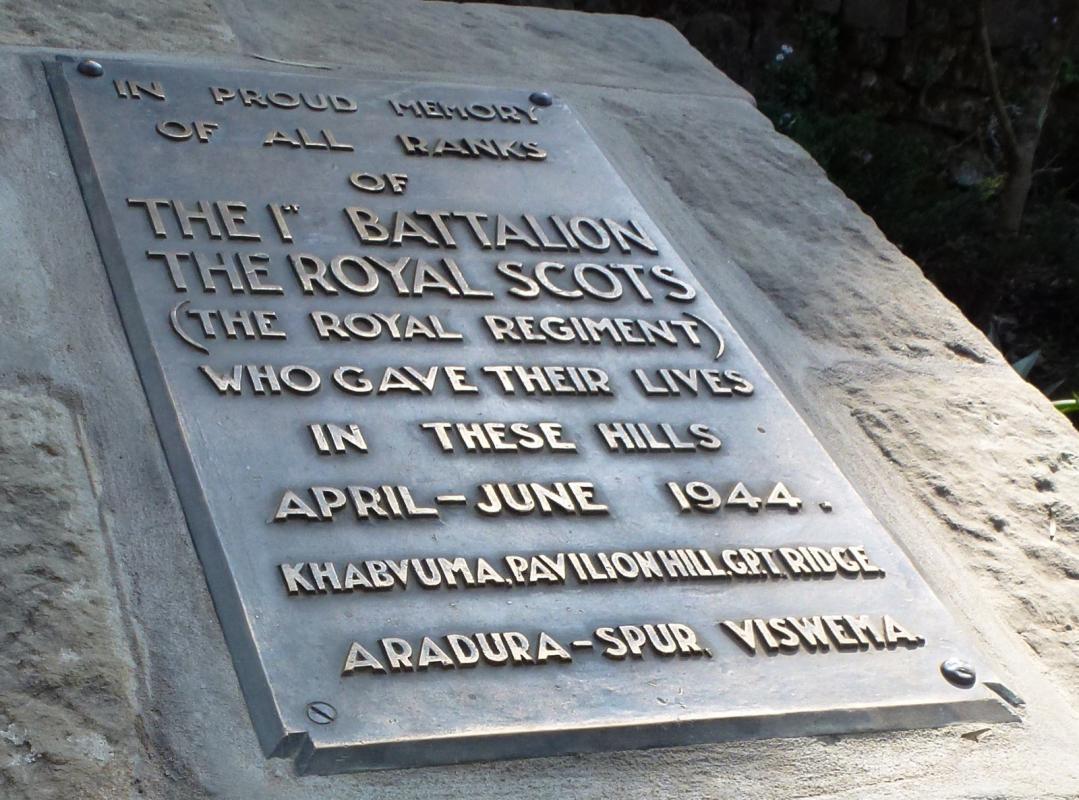
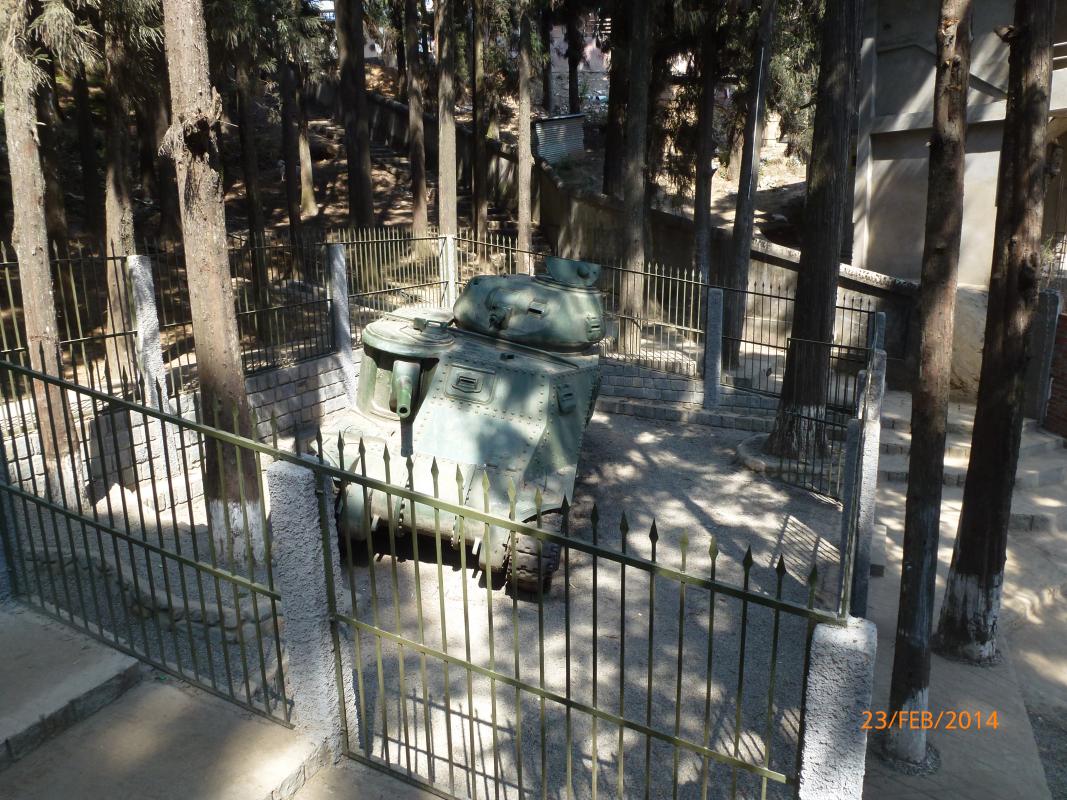
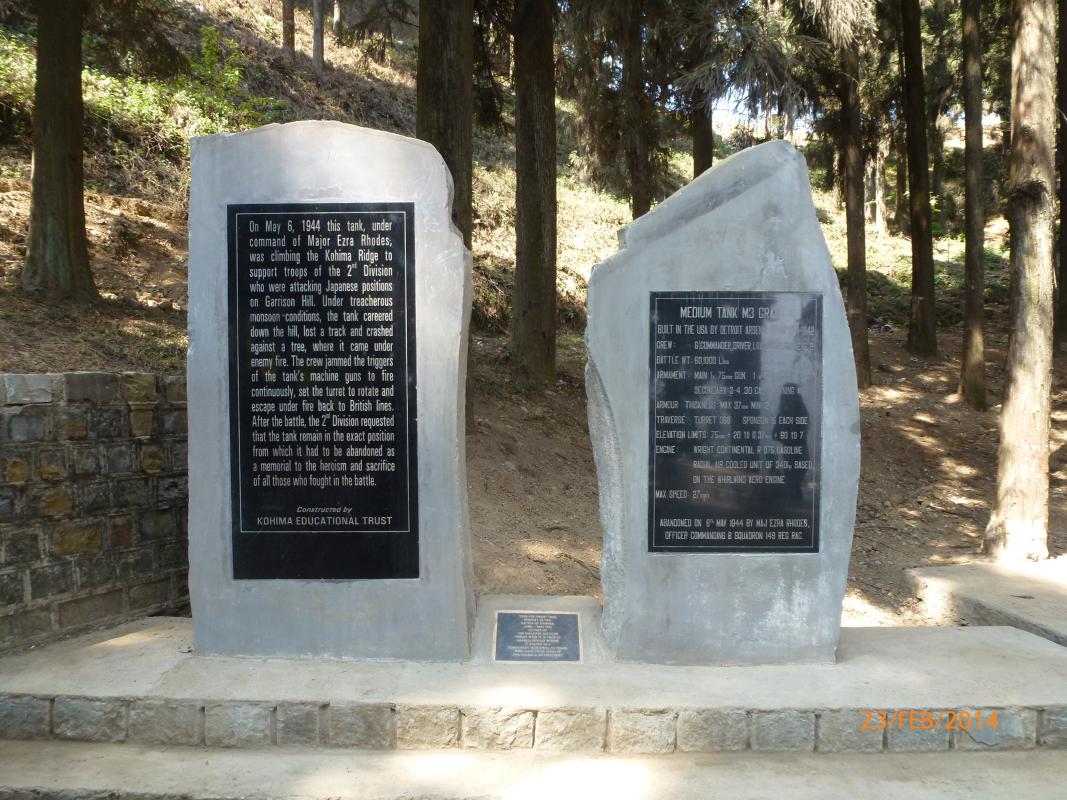
British Regiment Memorials around Kohima, Nagaland, India ** REGIONAL ADMIN. AWARD & CERTIFICATE OF MERIT.
in Great Britain: Research, Documentation & History
Posted
The 161st Indian Infantry Brigade Group Memorial (KWC).